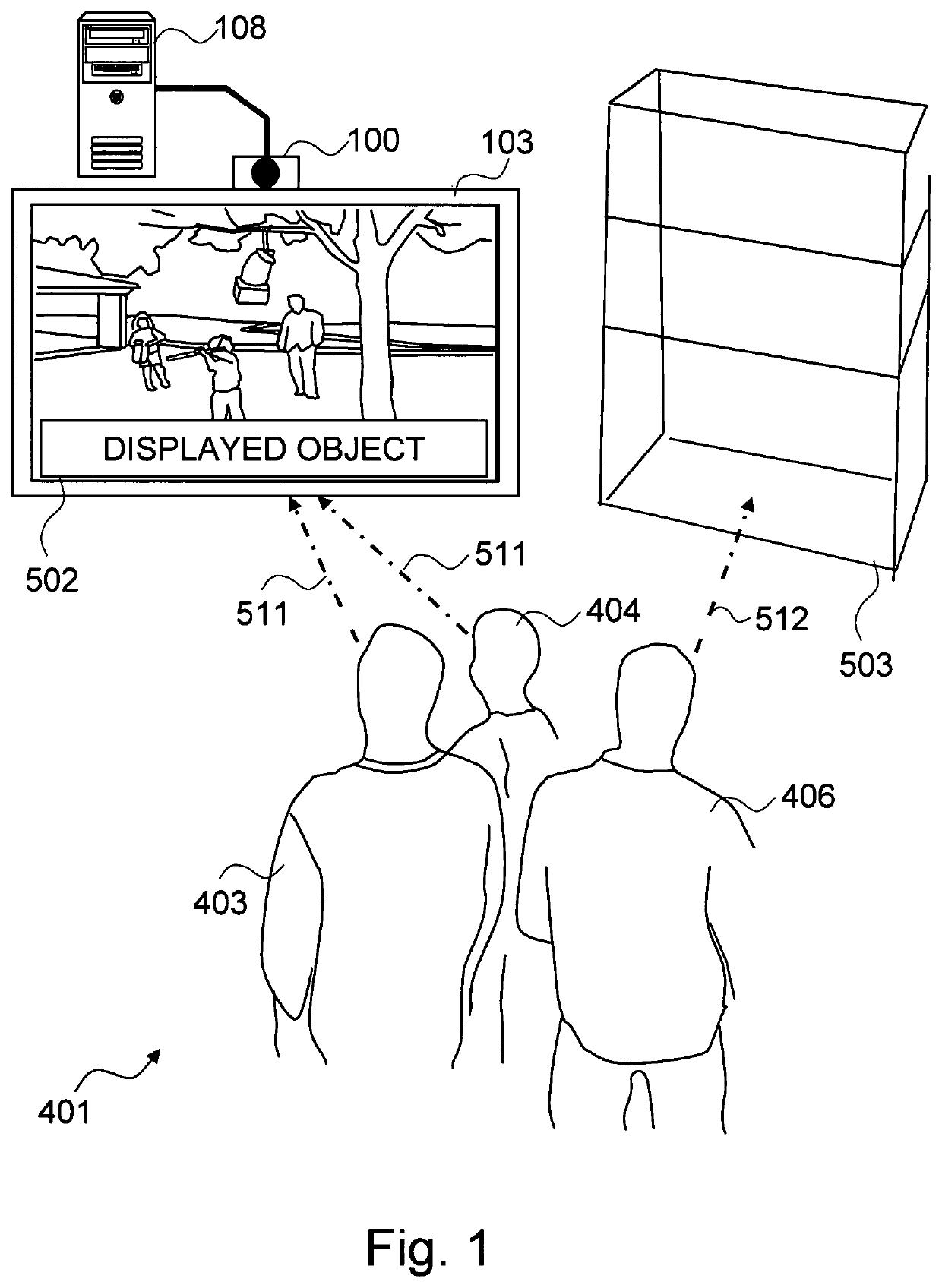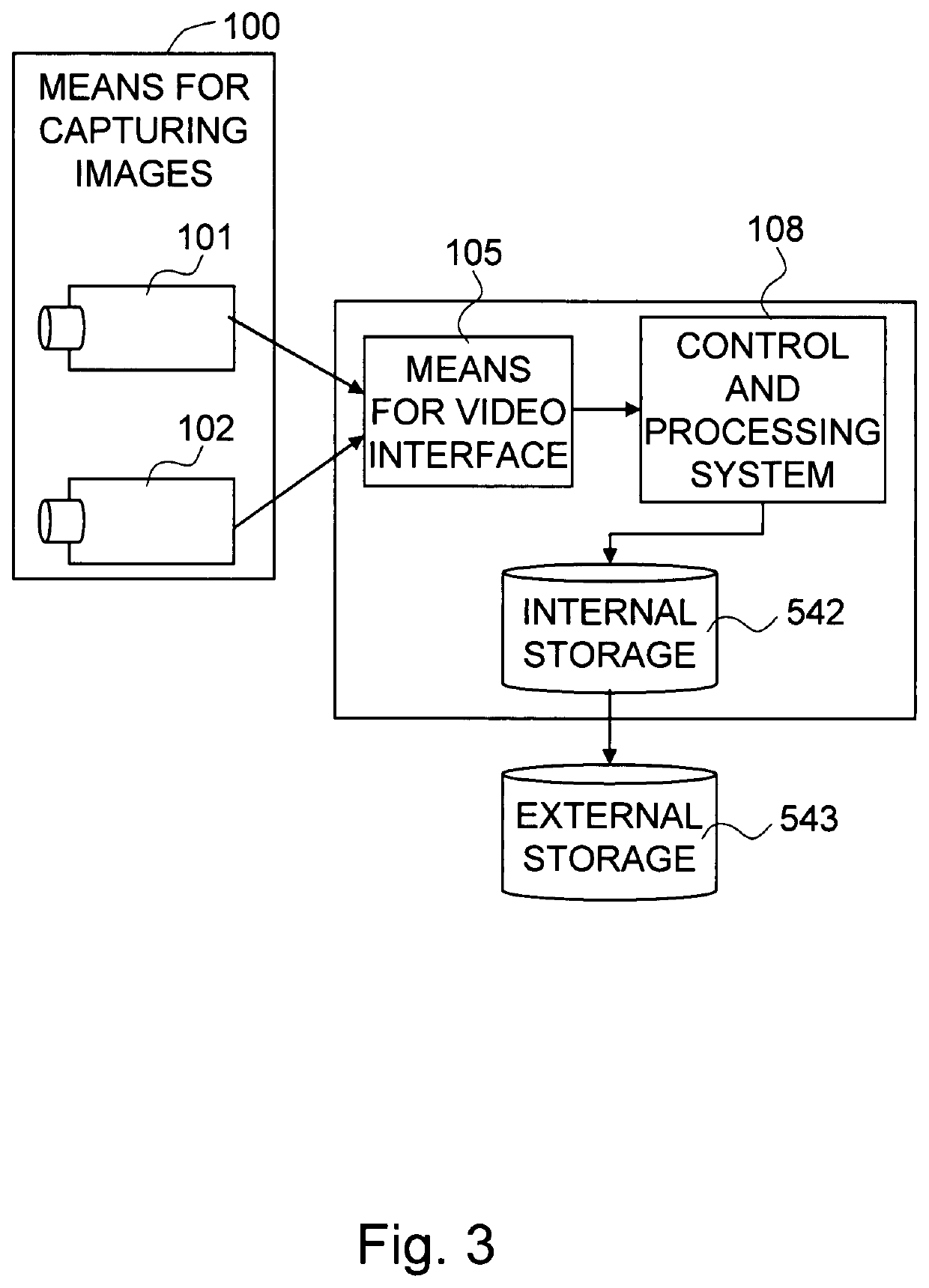Method and system for measuring viewership of people for displayed object
a technology of display object and viewership, applied in the field of automatic measurement of viewership of people for displayed objects, can solve the problems of cumbersome carrying of monitors around, inability to use assumptions as a basis to provide accurate measurement for attentiveness, and inability to accurately measure attention
- Summary
- Abstract
- Description
- Claims
- Application Information
AI Technical Summary
Benefits of technology
Problems solved by technology
Method used
Image
Examples
Embodiment Construction
[0062]FIG. 1 shows an overview of an exemplary embodiment of the present invention. The present invention is a method and system for automatically measuring viewership of people for a displayed object 502 by counting the number of viewers and the duration of viewing by the viewers. In the exemplary embodiment shown in FIG. 1, the displayed object 502 can comprise in-store marketing elements, static signage, POP displays, various digital media, retail TV networks, and kiosks. The displayed object 502 can also comprise the media content shown on the means for playing output 103. In the present invention, the viewership also comprises impression level, impression count of the viewers, such as how many people actually viewed said displayed object 502, average length of impression, distribution of impressions by time of day, and rating of media effectiveness based on audience response. The viewership information can be used to analyze the stopping power of the displayed object. For examp...
PUM
 Login to View More
Login to View More Abstract
Description
Claims
Application Information
 Login to View More
Login to View More - R&D
- Intellectual Property
- Life Sciences
- Materials
- Tech Scout
- Unparalleled Data Quality
- Higher Quality Content
- 60% Fewer Hallucinations
Browse by: Latest US Patents, China's latest patents, Technical Efficacy Thesaurus, Application Domain, Technology Topic, Popular Technical Reports.
© 2025 PatSnap. All rights reserved.Legal|Privacy policy|Modern Slavery Act Transparency Statement|Sitemap|About US| Contact US: help@patsnap.com



